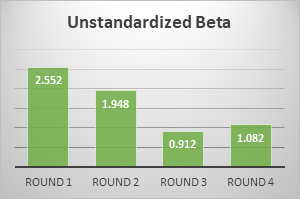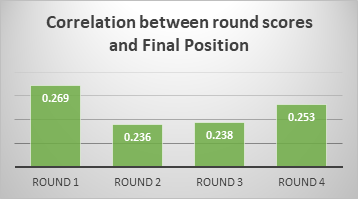
As the primary PGA season is in remission until the start of 2024, I wanted to look back and examine the previous decade and focus on just how significant each round is within a tournament weekend. For individuals who are unfamiliar or exclusively tuned into who the LIV golf tour, a standard PGA tournament entails 4 rounds of golf, with each round consisting of 18 holes.
Following the initial two rounds, encompassing 36 holes, there is a cut. This cut essentially means that unless a player achieves a score that meets or surpasses the designated cut score, they will be eliminated from further competition and sent home. Should a player successfully navigate the cut, he will play in the other two rounds and thus giving them the opportunity to contend for the win. The objective of this analysis is to understand just how important each round is for these players that are all fighting towards victory.
Before diving into the data analysis, it is important to provide more comprehensive background of each of the four tournament days. These four days of tournament play are quite different. The environmental conditions, the pin placements, and even variations in tee box configurations are all different factors that golfers need to consider when looking at the tournament. Even after the cut, the tensions rise and every shot closer to the finish carries a heightened significance. But does it really make that big of a difference?
Among the 4 rounds, Saturday is often called “Moving Day”, has consistently been perceived as the pivotal day of the tournament. This perception is rooted in the belief that players possess the opportunity to close the gap on the leaders if they deliver a very impressive outcome, especially if the leaders produce an average/mediocre round of golf. So, I’m curious if any other day is actually better for producing the desired results during a PGA tournament week.
Method of Interpretation
To make sense of this data, I’ll be focusing on every player who made the cut in the last 10 years across six major tournaments. These tournaments include The U.S. Open, The British Open, The Players, The Masters, The PGA Championship, and The Tour Championship. Along with using the last ten years of available data, this approach allows us to analyze the performance of players who advanced past the initial cut across a diverse range of prestigious events.
Predictions
Before conducting the desired correlations to determine which round holds the most importance within a tournament week or in other words, most influential to the final position; I initially predicted that round 3, commonly referred to as “Moving Day”, would have the greatest impact. My rationale behind this predication was that this round follows right after the cut and players want to prove to themselves that they can and are able to contend for a win on the PGA tour.
With that reason, I believe that the characteristic of the round heightens the volatile attitude in terms of bad or good due to players pushing so hard to be the best…risky shots and aggressive lines might end up being penalizing for many ambitious professionals. The potential for significant shifts in position during this very important round turns into the focal point in terms of its impact on final standings.
Data


Results/Conclusion
As you can see, results were not as predicted, the strongest relationship with final position was most correlated when involving round 1. When comparing the relationships, all four rounds are significant to the overall finishing position of a player, but the first round stood out to be the most important.
The accompanying bar graph to the left shows the correlation between the four rounds of golf and the four rounds are bookmarked by the most important rounds of Thursday and Sunday rounds. While the bar graph to the right shows the unstandardized beta of each round compared to the final position meaning that for each stroke that round 1 increase by final position will increase by 2.552.
When trying to understand how this could be true, I thought back to a quote that I heard years ago when looking into how great golfers think about tournaments. The popular saying was “you cannot win on the first day of a golf tournament but you sure can lose it.” I think that quote ties in with what this data is showing and that is if the professions get off to a good start, those players will be in a better position by the end of the week. Opposed to the other possibly of starting off on the wrong foot and struggling to get back into the tournament. Many times, if players get off to a bad start, they count a made cut as a win which in relation to winning the golf tournament is a lesser accomplishment. In essence, the data shows just how significance a solid start is when determining a player’s trajectory in the tournament, further emphasizing the importance the first-round score holds in terms of the final position.
Sources
ESPN Internet Ventures. (n.d.). Serving sports fans. anytime. anywhere. ESPN. https://www.espn.com/
Pelzer, C. (n.d.). PGA TOUR Live Ad. photograph
About the Author
 Davis Bush is a senior at Samford University. He is majoring in Finance with a concentration in Data Analytics.
Davis Bush is a senior at Samford University. He is majoring in Finance with a concentration in Data Analytics.
